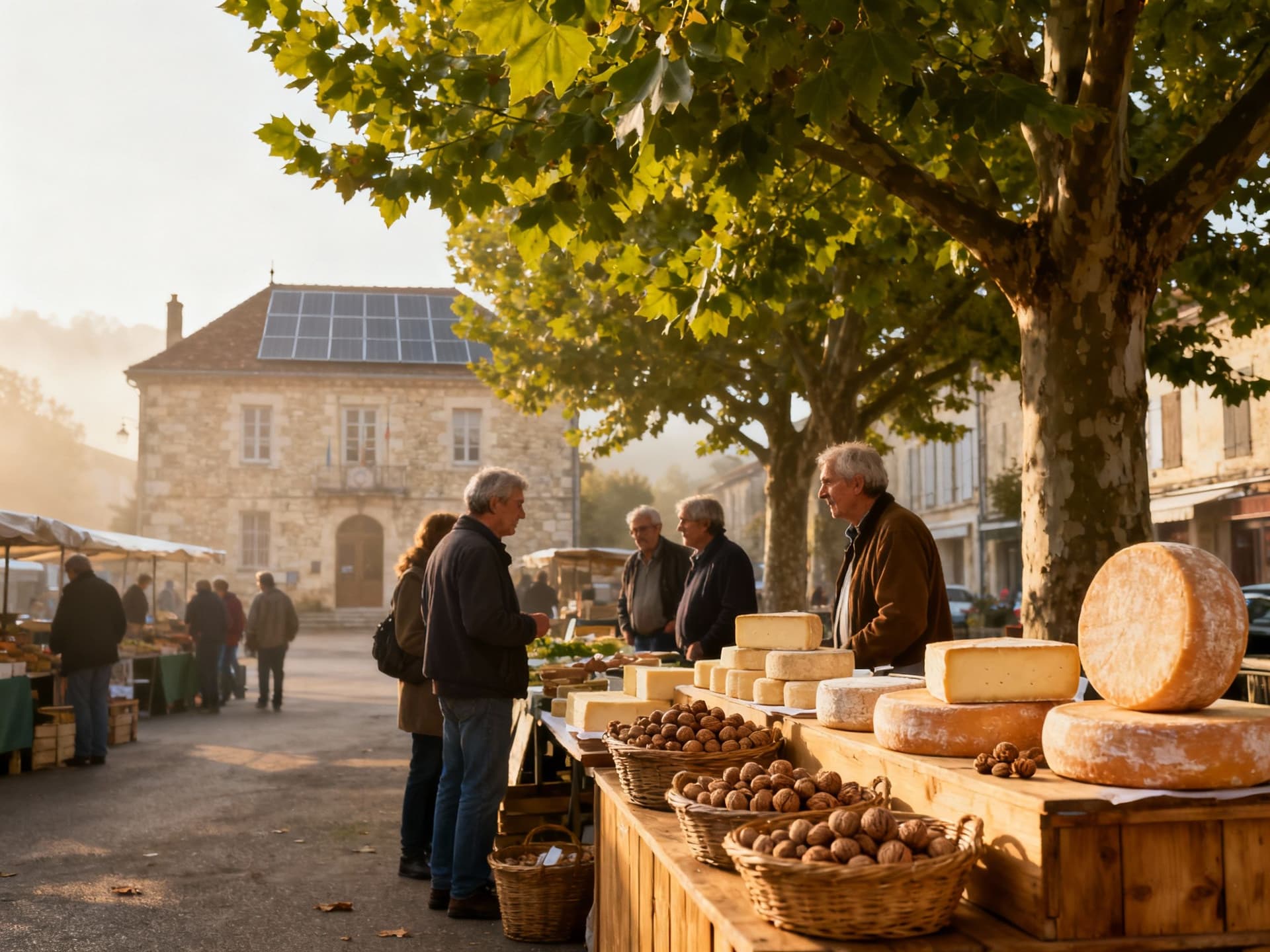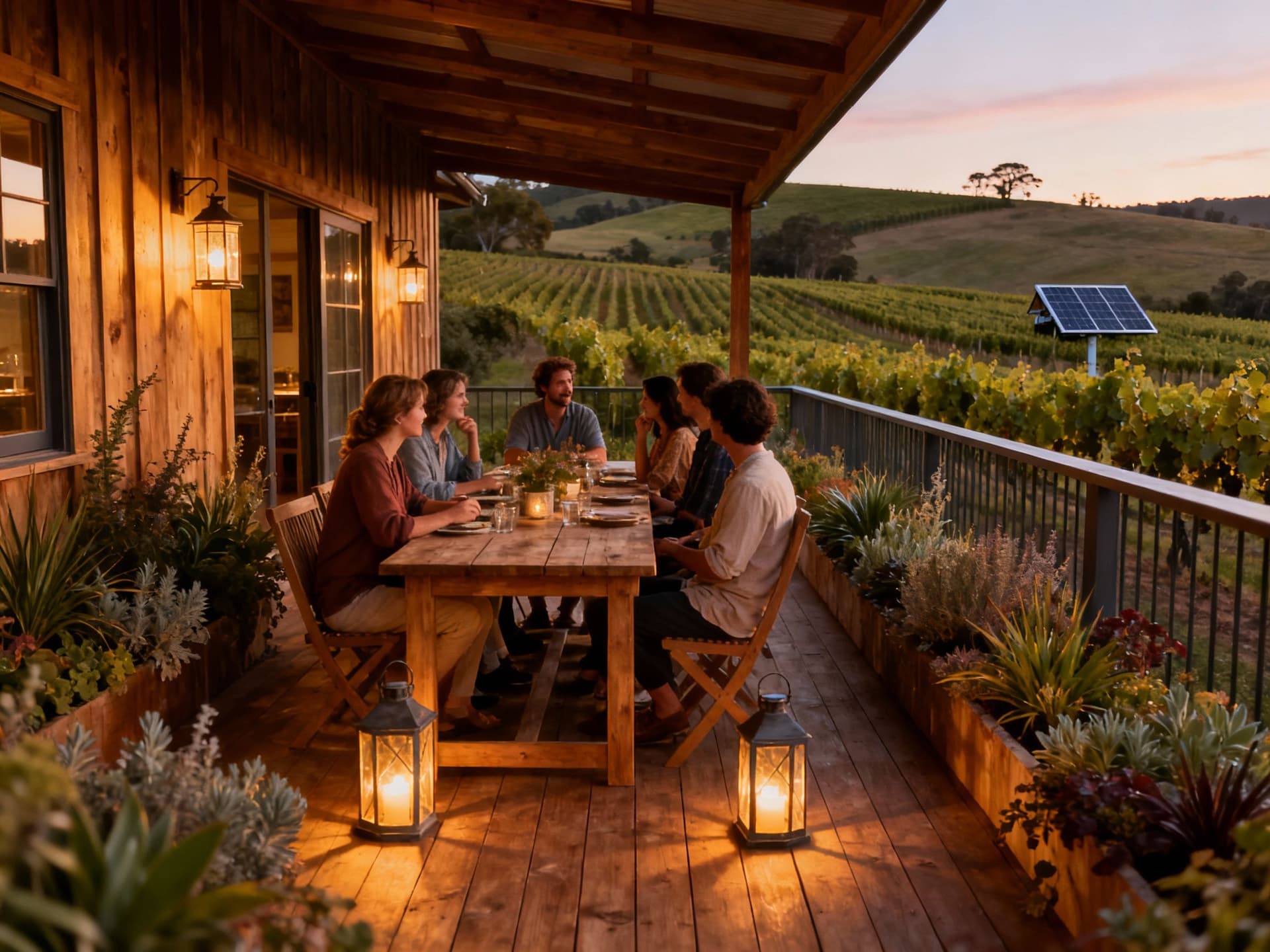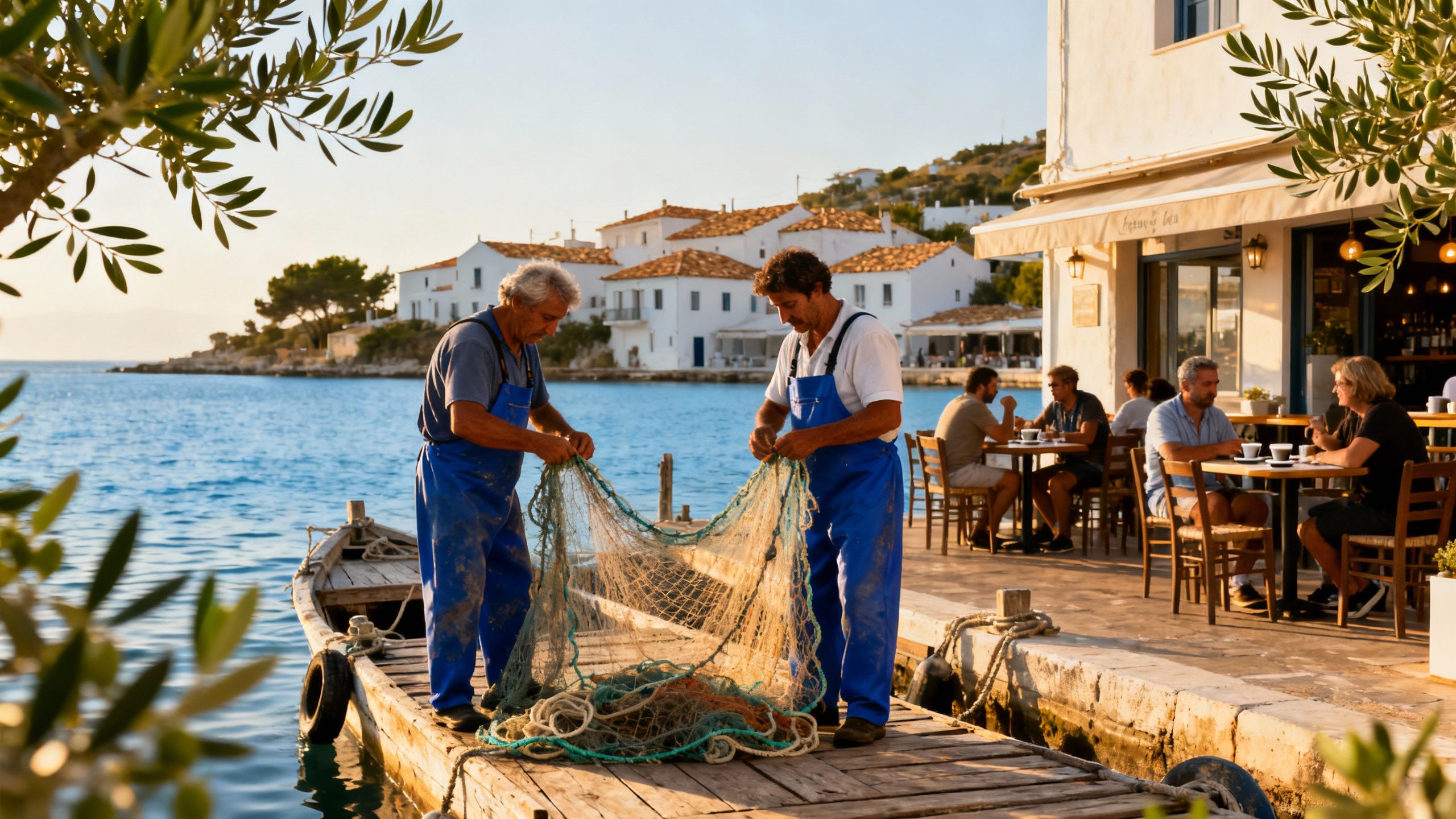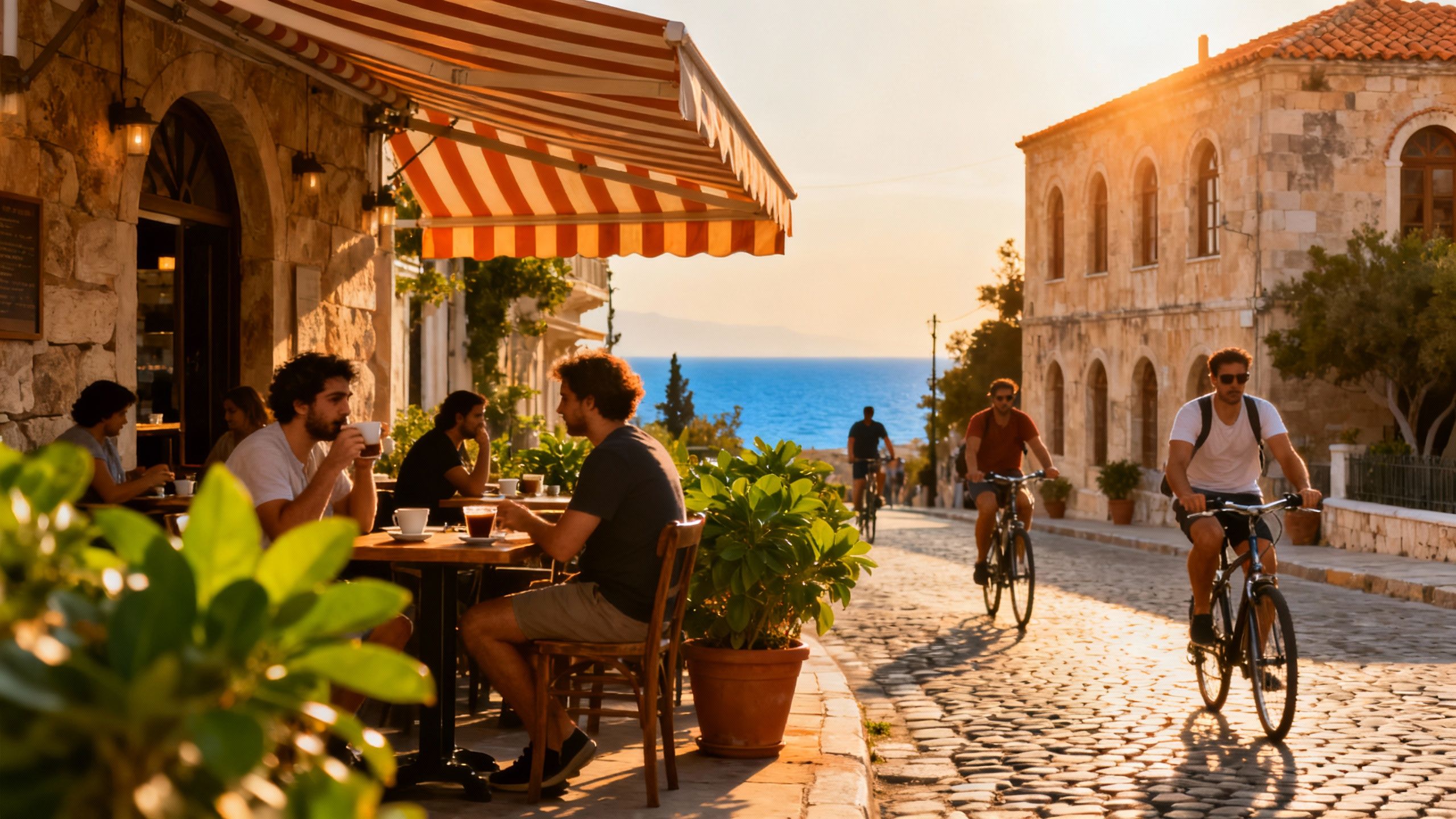France’s Renewable Regions: Lifestyle Wins and Myths
Discover France’s unexpected pockets where renewables, village life and real value converge — buy for place, not just features, and use local green infrastructure to your advantage.
Imagine waking to the smell of fresh patisserie, cycling past a solar-panelled vineyard and ending the day at a village marché beneath plane trees. In France, green infrastructure isn’t an abstract policy — it shapes how neighbourhoods breathe, where children play and which houses keep warm in winter without noisy boilers. For international buyers dreaming of a life that blends slow pleasure and low impact, the country offers surprising pockets where renewable energy, green planning and authentic village life intersect — and where common assumptions about cost, convenience and community need serious myth-busting.
Living the French green-life

Morning in France can mean different rhythms: seaside fishermen hauling nets on the Vendée coast; artisans opening boulangeries in Aix-en-Provence; or a dawn fog lifting off a renovated stone farmhouse in Dordogne whose photovoltaic array hums quietly. These are not postcards alone — they’re everyday backdrops where community energy cooperatives, village solar projects and timber-restored homes make sustainable living tactile. If you crave walking to a market, borrowing tools from a neighbourhood coop, or sleeping in a house that stays cool through heatwaves, these places reward patience and a willingness to listen to local rhythms.
Southwest villages: Proven lifestyle, growing green grid
Drive an hour from Bordeaux and you’ll find villages where restored stone homes sit beside new community solar fields and lively Saturday markets. Kyero highlights areas like Lot‑et‑Garonne and Dordogne as magnets for internationals seeking accessible airports and vibrant local life — and many of these communes are investing in local renewable projects that lower running costs and knit neighbours together. The payoff is experiential: a shared orchard harvest, a neighbour-hosted repair café, and lower utility bills that feel like everyday stewardship.
Coastal towns where sea breeze meets wind farms
From the Atlantic shore to the Mediterranean fringe, coastal communities are balancing tourism with green infrastructure: local authorities often prioritise shoreline protection, dune restoration and small-scale renewables to preserve both landscape and income. The result for residents: living moments of bright air, markets heavy with seafood and an infrastructure that increasingly shifts energy sourcing to sun and wind rather than distant, polluting plants.
- Lifestyle highlights to look for (actual places and experiences)
- Saturday market at Place de la Libération, Bergerac (fresh foie gras, local walnut oil) — perfect if you want an active food culture and quick airport access. (Dordogne/Bergerac area).
- Early-morning surf at La Guérinière, Île de Noirmoutier — coastal life with community-led dune restoration projects and nearby solar cooperatives.
- Winegrower’s cooperative tastings in Lot‑et‑Garonne — a social way to learn about passive-solar barns and timber-frame renovations.
Making the move: practical considerations

Dreams meet deeds in paperwork, inspections and local planning. The practical truth: green features matter not only for lifestyle but for negotiation, insurance and long-term value. Regions investing in renewables often offer grants, energy audits and retrofit support — all levers you can use when making offers. Being selective about where you buy means choosing communities committed to green infrastructure rather than properties that merely wear solar panels as fashion.
Property styles that match a low-impact life
Stone farmhouses with thick walls, shaded Provençal villas and renovated village houses all have different sustainability trade-offs: thick stone keeps heat in but can be costly to retrofit; new timber builds boast low embodied carbon but may sit in regulated zones. Match form to function: choose a property whose bones suit your preferred upgrades — insulation, heat pumps, rainwater harvesting — rather than forcing a mismatch.
Working with local experts who care about place
- 1) Hire an agent who knows village energy projects and municipal planning (they’ll save you time and uncover grants). 2) Ask for recent energy diagnostics (DPE) and past bills — these reveal real running costs. 3) Prioritise properties with adaptive features: south-facing glazing, space for battery storage, and native gardens. 4) Meet the mayor or local energy coop — a short conversation reveals long-term community priorities. 5) Build a checklist of regional supports (local subsidies, tax credits) before you negotiate.
Insider knowledge: what expats wish they’d known
Real talk from internationals: the best buys pair lifestyle with community infrastructure. Buyers who chose places because of a single glossy feature (a pool, a kitchen island, a headline-grabbing sea view) sometimes find themselves isolated when the real support — a cooperative that runs the local microgrid, a neighbour who mows common land, a reliable shuttle to the nearest train — is missing. The wiser move is to prioritise place-first: which village or town will you join, not just which house you will own.
Cultural integration and community rhythms
Language helps, but so does presence: volunteer at the marché, attend the mairie meeting about a new solar park, learn to repair a fence with a neighbour. These small rituals endow a home with belonging and protect value in a way that market data cannot. Expect slower administrative turns but deeper ties — and remember that French towns often vote on building projects and energy plans, so being part of the conversation matters.
Long-term stewardship and evolving lifestyles
Think beyond the purchase: will the village continue to invest in greening transport links, broadband for remote work, and biodiversity corridors? Market snapshots show foreign buyer interest rising in 2025 in regions that pair access with green investment. Houses bought with stewardship in mind often reward owners with lower bills, stronger rental appeal and a richer everyday life.
Conclusion: If you want a home that feels generative — where the soil, the neighbours and the building all hum together — buy for place, not just property features. Start by visiting markets, asking mayors about energy plans, and seeking agents who understand both vernacular architecture and municipal green strategy. When you place yourself in a community already committed to renewable energy and ecological stewardship, your purchase becomes a pathway to living well, not only a transaction.
Norwegian market analyst who relocated from Oslo to Provence; guides investors with rigorous portfolio strategy and regional ecological value.


